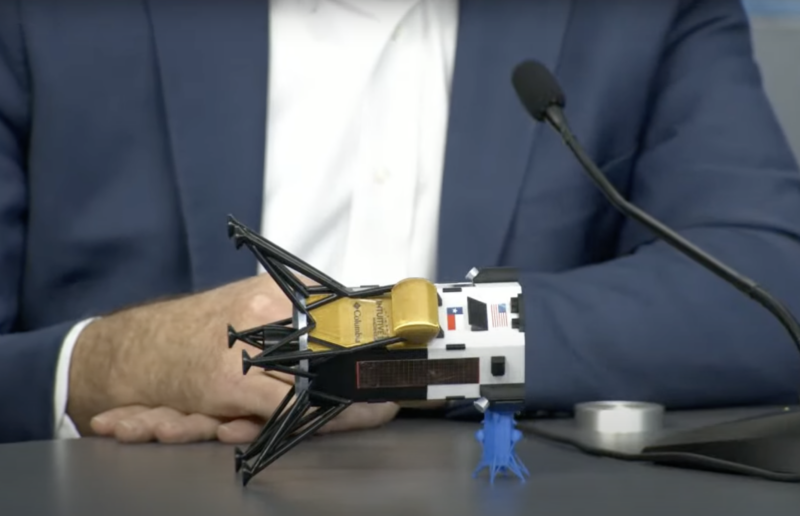
Yesterday, the startup Intuitive Machines earned its place in the annals of space exploration. In collaboration with NASA, the company attempted its first lunar landing with its IM-1 mission. After an agonizing communications outage, Intuitive Machines confirmed that its lander, named Odysseus, was resting safely on the surface. It was the first successful lunar landing by a commercial company, as well as the first American lunar landing in 52 years. The landing garnered significant attention from the public and the media. Odysseus didn’t just land on the Moon; it also landed on the front page of Google News and on the surface of the ostentatious Las Vegas Sphere. Outside of the communications issue, initial data indicated that the lander was standing upright and that it was in good health.
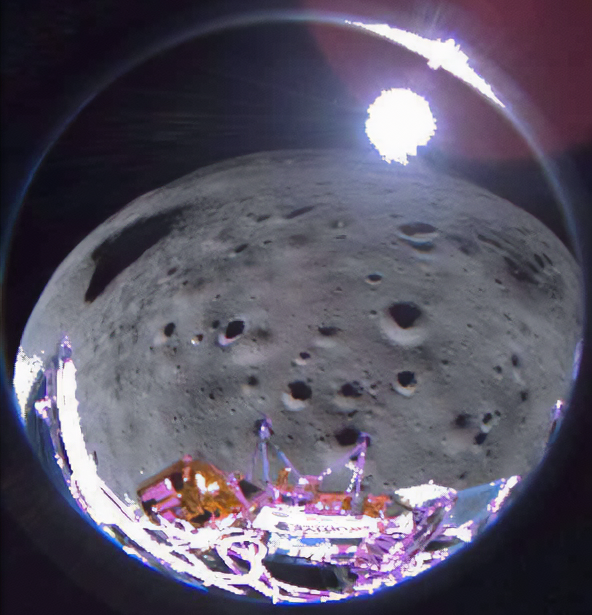
Or so we thought. Intuitive Machines CEO Steve Altemus and IM-1 Mission Manager Tim Crain joined NASA officials Joel Kearns and Prasun Desai for a press conference one day after the landing. They revealed that the landing was far more dramatic than the public realized at the time [1]. When it contacted the lunar surface, Odysseus began tipping over; its fall was only arrested by a fortuitously-placed boulder. However, this should not in any way detract from Intuitive Machines and NASA’s achievement. Odysseus is fully operational and actively collecting data; the same cannot be said for many recent lunar landings. The story of IM-1’s landing on the Moon is a testament to human ingenuity and to the talent of the Nova-C team.
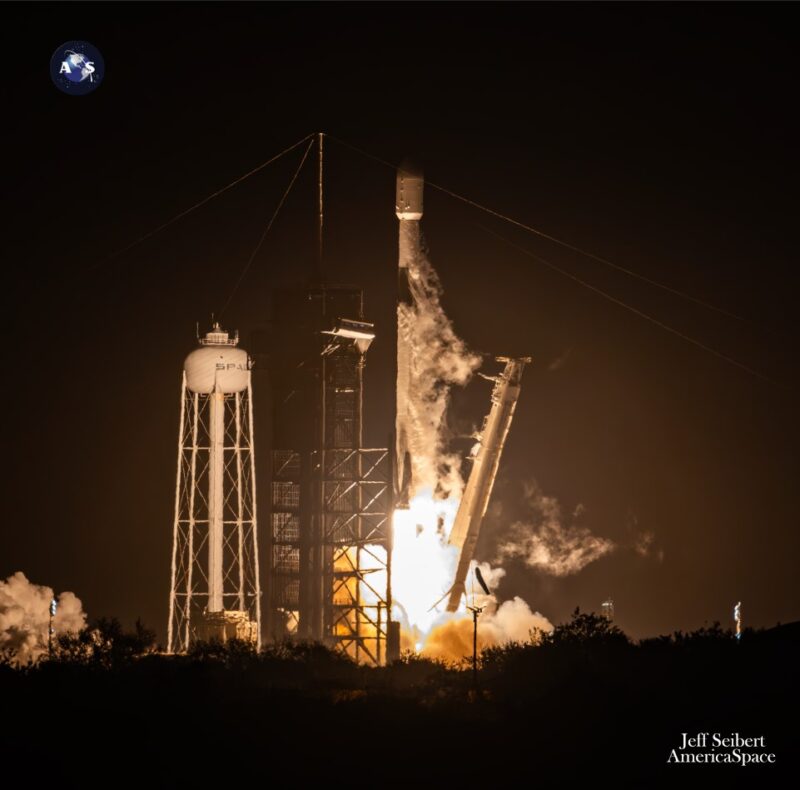
Given the sheer number of challenges which IM-1 encountered, it is impressive that the team landed the spacecraft on the Moon in one piece. “It was a spicy seven-day mission to get to the Moon,” said Altemus. As AmericaSpace’s Ben Evans recounted, IM-1’s landing was the culmination of an action-packed week for the Intuitive Machines team. Following its early-morning launch on a SpaceX Falcon 9, Odysseus’ star trackers and liquid oxygen feed line displayed unexpected behavior. The team resolved these anomalies and completed a successful test of the VR-900 main engine. This was followed by a lunar orbit insertion burn on February 21st.
When it received its first Commercial Lunar Payload Services (CLPS) task order from NASA, Intuitive Machines was allowed to provide input on which payloads should be included on its lander. With the exception of the ROLSES radio telescope, the company requested technology demonstrations. NASA concurred. It turned out to be a wise decision for both organizations. These instruments primarily monitored the lander’s performance, and they collected valuable data during the flight to the Moon. As a result, NASA was able to obtain valuable data from IM-1, even after the lander tipped over and struggled with a reduced data rate. Beyond that, two of NASA’s instruments – which were only intended to serve as passive passengers on IM-1 – saved the mission.
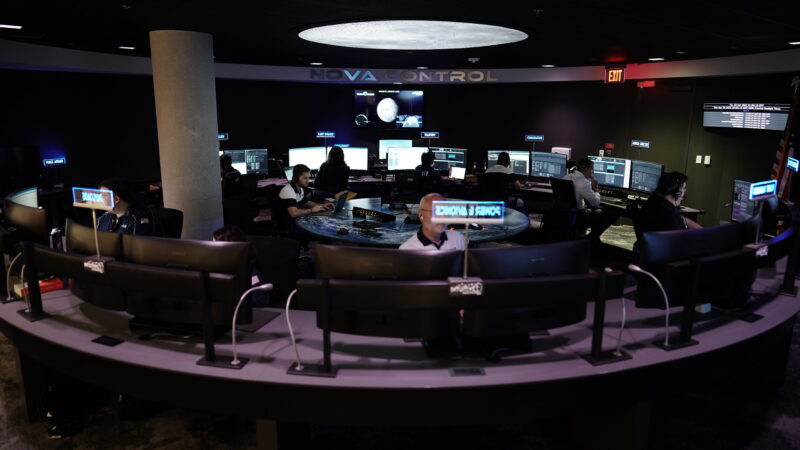
Odysseus uses a set of cameras to determine its position and a LIDAR (light detection and ranging) instrument to determine its altitude and velocity. However, while Odysseus was loitering in lunar orbit, Intuitive Machines discovered that the latter instrument was out of commission. After the lander was mated to its Falcon 9 launch vehicle, the launch team forgot to disable a safety switch on the sensor. The switch was designed to protect the eyes of the processing team from the laser, and due to its safety-critical function, it could not be triggered remotely.
It was a small mistake, but in planetary exploration, there is little margin for error. At the time, it appeared to portend the end of the mission. Altemus remarked, “I can laugh about it now. Tim (Crain) was on console as the mission director, and I said, ‘Tim, we’re going to have to land without laser rangefinders. And his face got absolutely white, because it was like a punch in the stomach (knowing) that we were going to lose the mission.”

By a stroke of good fortune, NASA had its own experimental LIDAR system onboard Odysseus. The Navigational Doppler LIDAR (NDL) bounces three laser beams off the surface of the Moon and uses them to determine a spacecraft’s descent velocity and its altitude above the surface. This is a critical technology for future missions, especially if they are landing in shadowed areas without recognizable surface features. IM-1 was just supposed to collect data on the performance of the laser, but the team realized that it could play a more central role.
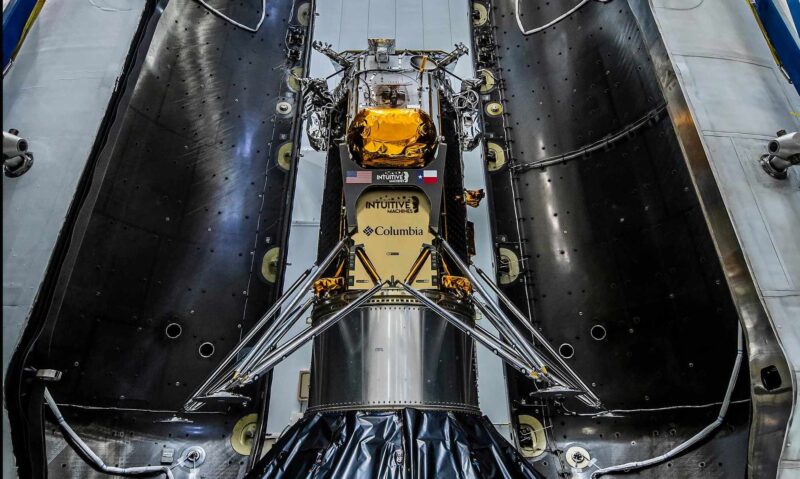
In a herculean effort, NASA and Intuitive Machines’ software engineers rewrote the navigation software to accept data from the NDL instrument. As Odysseus’ laser rangefinder pointed in a different direction than NDL, the team also needed to adjust the flight computer’s interpretation of the laser data to yield correct altitude measurements. After testing the software on a ground-based prototype, they then uploaded it to the lander. This was a risky operation, as Odysseus was unable to determine its orientation in space while the software rebooted. However, the improvised solution worked, and the NDL data enabled Odysseus to land intact on the lunar surface. “In normal software development for a spacecraft, this is the kind of thing that would have taken a month,” said Crain. “Our team basically did that in an hour and a half.”
The Radio Frequency Mass Gauge (RFMG) had its own moment of glory. The instrument was developed at NASA’s Glenn Research Center, and it uses radio waves to estimate the amount of propellant inside a fuel tank. As fluid creeps up the edges of a tank in microgravity, RFMG is more accurate than traditional fuel gauges. As Nova-C uses cryogenic liquid oxygen and liquid methane propellants which can boil off into space, it is vital to closely monitor their temperatures. One sensor indicated that a propellant tank was colder than expected. Intuitive Machines was concerned that this might be indicative of a propellant leak. “Because we had the Radio Frequency Mass Gauge, we were able to confirm that the propellant masses were stable and that we just had an anomalous temperature reading,” Crain recalled.
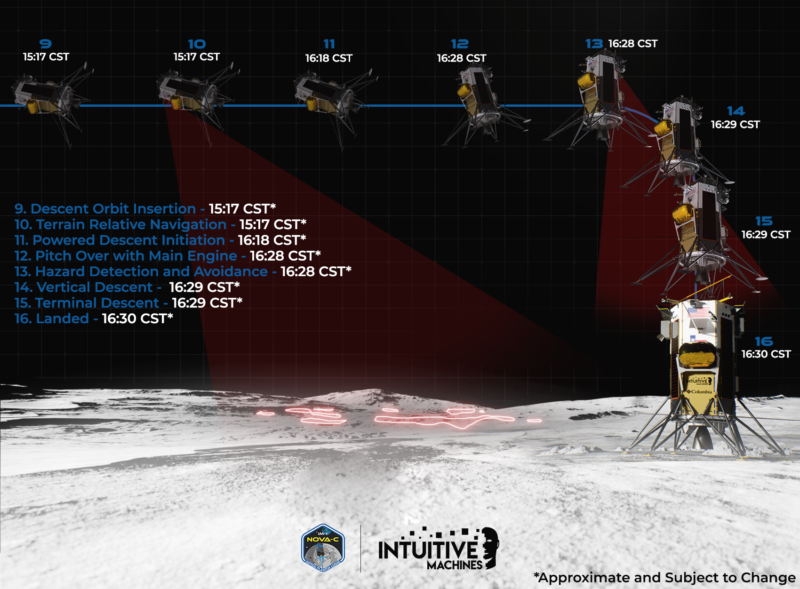
On the following day, IM-1 made its historic landing. A ten-minute braking burn slowed Odysseus’ velocity, allowing it to exit lunar orbit and begin its descent to Malapert A. 3300 feet (1 kilometer) above the lunar surface, the spacecraft pitched over to a vertical orientation and ignited its main engine for the vital landing burn. However, 650 feet (200 meters) above the lunar surface, Odysseus began to roll slowly around its vertical axis. After rotating eight degrees, the lander lost contact with Earth. Its four high-gain antennae are fixed in place and cannot swivel to track a ground station on Earth. After losing contact with Odysseus for a nerve-wracking 11-minute period, the Goonhilly Radio Telescope in Cornwall picked up a faint carrier signal from the lander. Inside Intuitive Machines’ control center in Houston, Crain told his team, “We’re not dead yet!” Shortly thereafter, public affairs officer Josh Marshall confirmed a successful landing. “Odysseus has found a new home,” he remarked.
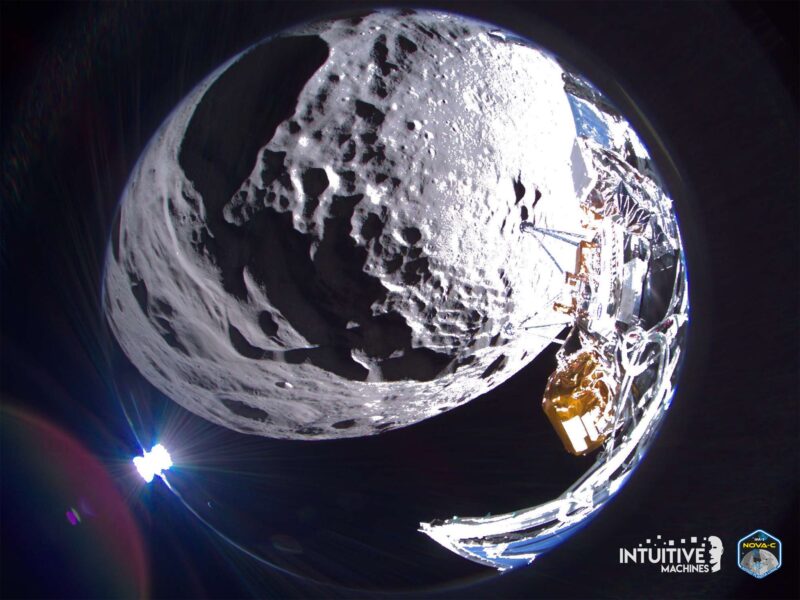
The touchdown itself was defined by equal doses of good and bad fortune. The flight control team’s initial hypothesis was that Odysseus landed upright. However, this claim relied on old data which indicated that the spacecraft’s residual propellant pooled at the base of its fuel and oxidizer tanks. Subsequent measurements showed that the propellant instead settled on one edge of each tanks. This indicates that Odysseus is resting on its side rather than on its six landing legs.
When it contacted the lunar surface, Odysseus was descending at a velocity of six miles per hour, which was 50% beyond the expected rate. However, due to discrepancies in the landing software, it also retained a noteworthy horizontal velocity of two miles per hour. This horizontal drift was double the desired velocity for Nova-C. Any lateral motion during touchdown is particularly deadly on the Moon. In the aftermath of the landing, Phil Metzger, a planetary physicist at the University of Central Florida, explained why lunar landers are prone to tipping over. “When a lander is tipping, inertial forces push it over, while gravity pulls its feet back down flat,” wrote Metzger [2]. “On the Moon, gravity is reduced by a factor of six, while inertial forces are not.”
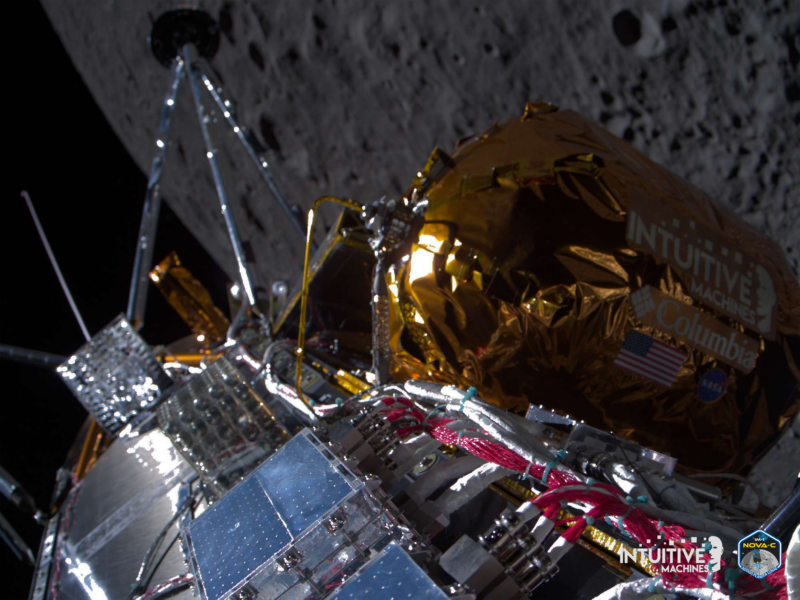
Because it was moving laterally, the lander’s footpads dragged across the rough lunar surface. One became caught against a rock or a divot in the terrain. With the stuck landing leg acting as a fulcrum, Odysseus began tipping over. However, there just so happened to be a large rock in front of the lander. This fortuitously-placed boulder caught Odysseus as it fell, preventing it from impacting the lunar surface. The end result of this rough landing was that Odysseus settled facing sideways, with its chassis roughly parallel to the lunar surface and its nose resting on the boulder. Altemus illustrated its orientation with two models during the briefing.
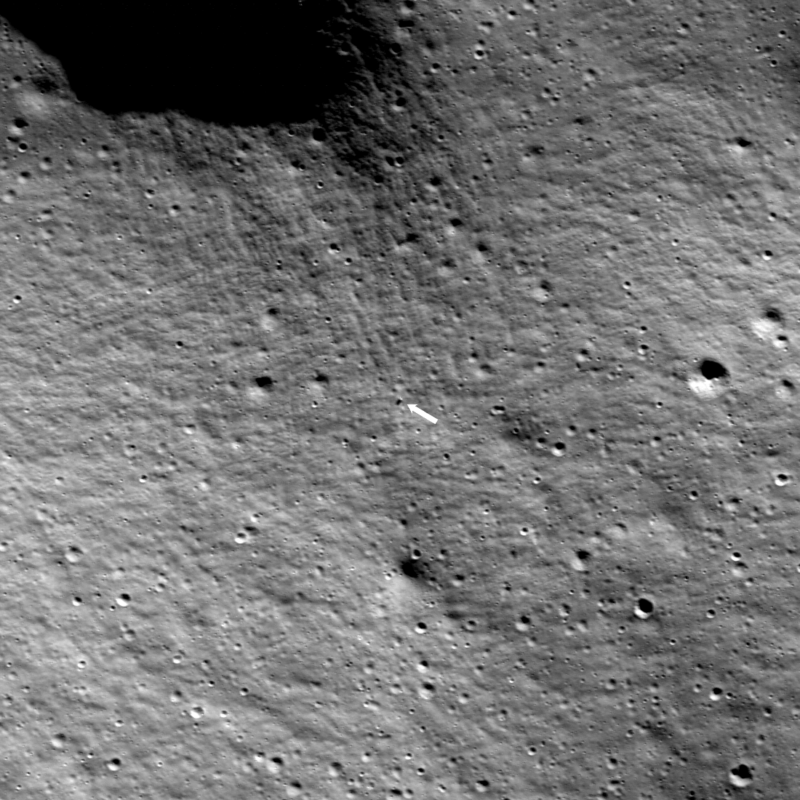
Prior to the briefing, one major open question was the location of Odysseus’ landing site. Crain confirmed that the lander touched down in the vicinity of Malapert A, as planned. However, the NDL and Odysseus’ flight software were not originally designed to work in concert. Therefore, the lander’s guidance algorithms were not as accurate as the Nova-C team had hoped.
On Sunday, NASA’s Lunar Reconnaissance Orbiter (LRO) flew over Malapert A. As it has done for many prior missions, the spacecraft used its powerful Narrow Angle Camera to pinpoint Odysseus’ location on the lunar surface. LRO revealed that IM-1 settled within a heavily-degraded crater located 0.93 miles (1.5 kilometers) from its intended landing site. The walls of this depression feature 12-degree slopes, which may have contributed to the mission’s unfortunate outcome. If Odysseus’ undesired horizontal velocity carried it sideways into the crater wall, this would increase the probability that it would become stuck against an obstacle. This, in turn, could have contributed to the lander’s fall. Landing inside the crater might also have contributed to the mission’s communications issues. At the lunar south pole, the Earth is low on the horizon. Large topographic features, such as a crater rim, can block radio signals or decrease their strength.
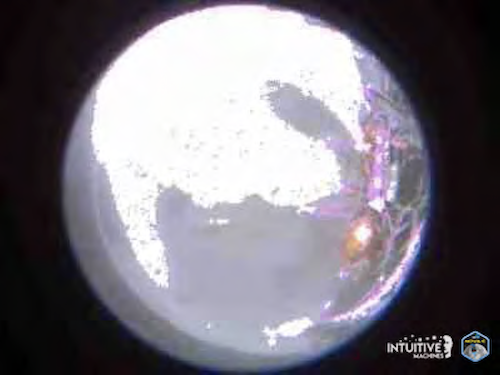
Since its arrival on the Moon, Odysseus has struggled with communications. On Monday morning, Intuitive Machines finally released the first two images to arrive back on Earth since Thursday’s landing. However, the only image taken from the lunar surface is too pixilated and washed-out to make out any details of the topography and geology of the Malapert A region. Another image was taken during descent, and it has a higher quality. However, it only measures 800 by 800 pixels, which is far below the resolution of the images captured during Odysseus’ cruise phase. Both images suggest that IM-1 is struggling to return large volumes of data to Earth.
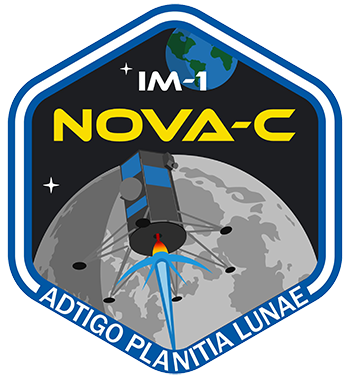
Intuitive Machines is trying to establish a reliable, higher-bandwidth communications link with the lander. If Odysseus does not receive a continuous “heartbeat” signal from Earth, its communications system will autonomously enter a safe mode. In this configuration, the spacecraft will first activate two of its four antennae. If it does not receive a transmission from Earth, it reboots the communications system. Then, if there is still no signal, it switches to the other pair of antennae and repeats the process ad infinitum. During the press conference, Crain that his team was on the verge of exiting this safe mode and establishing uninterrupted communications with two antennae.
It remains unclear how Odysseus’ unforeseen tumble will impact its scientific mission. Of the NASA payloads, the NDL and RFMG essentially completed their objectives when Odysseus landed. Another payload, the Lunar Node-1 radio beacon, is communicating with the Deep Space Network and does not require a high data rate to function. Some of the commercial payloads, such as the Lunaprise time capsule and artist Jeff Koons’ “Moon Phases” sculpture, do not need to transmit data back to Earth. In aggregate, it appears that some of the mission’s objectives may be met.
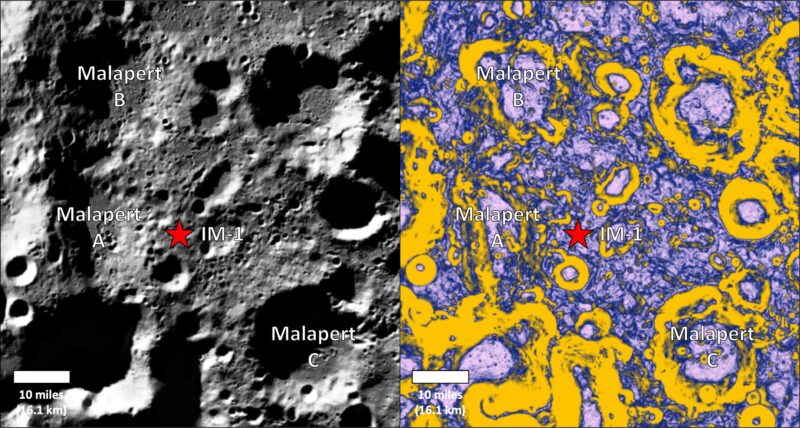
However, the low data rate does not bode well for the other payloads aboard Odysseus. NASA confirmed that the four SCLPSS cameras captured high-resolution videos during the landing. If these files can be downlinked to ground stations on Earth, they should provide a spectacular first-person view of the off-nominal landing. However, given the persistent communications issues, this may prove to be impossible. The future of the two astrophysics investigations is also unclear. Thus far, NASA and Intuitive Machines have not stated whether the four ROLSES radio antennae have enough clearance to deploy without hitting the ground. The International Lunar Observatory (ILO)’s two ILO-X cameras point in fixed directions. Since the lander is not upright, it is unclear whether they are still oriented towards their primary target, the center of the Milky Way Galaxy.
When Intuitive Machines modified the landing software to accept data from the NDL, they did not have enough time to incorporate the deployment of Embrey Riddle University’s EagleCam into the sequence. The student-built camera, which aimed to collect the first external imagery of a lunar landing, was not ejected during the terminal descent phase of IM-1. Intuitive Machines still intends to deploy the instrument to capture an image of Odysseus on the lunar surface.
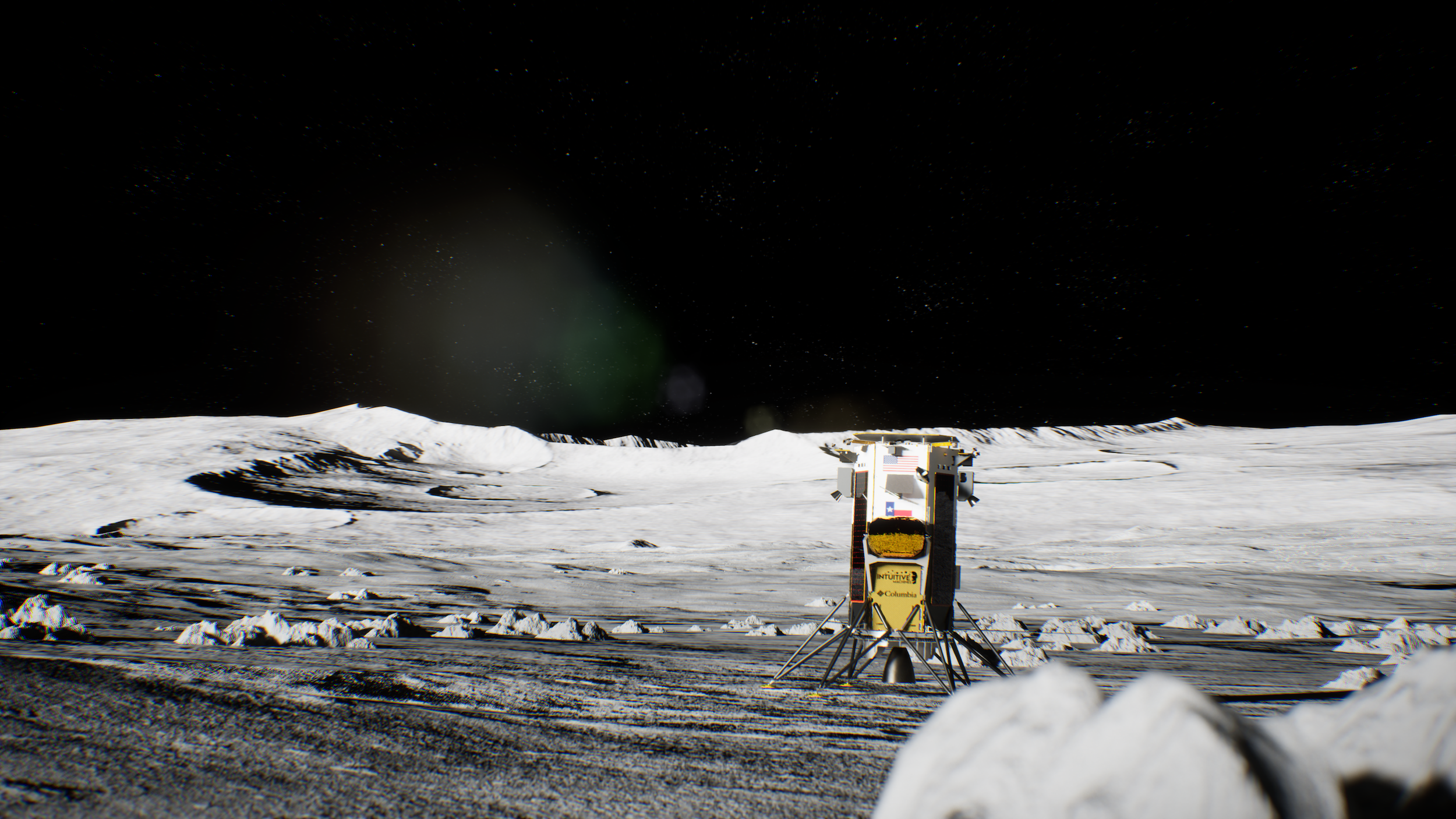
Unfortunately, time is running out for Odysseus. On Friday, Crain claimed that the lander should be able to survive for nine days before the Sun sets on Malapert A. This prediction was substantially reduced today when the company estimated that the IM-1 mission will end as early as Tuesday morning. While the lander will still have power, radio telescopes will no longer be able to receive its signals due the the respective positions of the Earth and the Moon. Until then, Intuitive Machines and NASA will continue to build on their initial accomplishments by returning as much scientific data as possible.




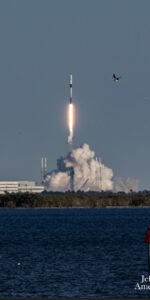
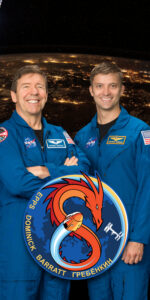
One Comment
Leave a ReplyOne Ping
Pingback:IM-1 Communication Struggles After Tipping Over - Space Holics